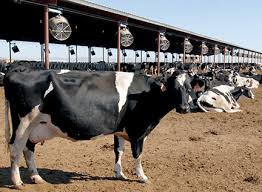Zimbabwe’s milk production bulks 21 percent
Zimbabwe’s milk production rose 21 percent to 27,3 million litres during the first quarter of 2024 from 22,61 million litres in the same period last year, latest data shows.
It comes as the Zimbabwe Association for Dairy Farmers (ZADF) is expecting reduced feed stocks in the form of roughage (maize silage) and protein sources due to the effects of the El Nino-induced drought, which will affect national milk production and productivity.
Statistics from the Agriculture Ministry’s Dairy Services Department, show that the country’s milk intake by processors went up 21 percent in the first quarter of 2024 to 25,07 million litres from 20,74 million litres in the comparative period.
Retail milk production increased by 19 percent to 2,22 million litres in the first quarter of 2024, compared to 1,86 million litres in the first quarter of 2023.
Average milk output for the period under review stood at 9,1 million litres. In the first quarter of 2023, the country’s average milk output stood at 7,53 million litres.
In March this year, the country’s milk production appreciated by 19 percent to 8,96 million litres, compared to 7,51 million litres in March last year.
At 8,96 million litres, March 2024 milk production was up 2 percent from 8,81 million litres recorded in February this year.
January milk output of 9.52 million litres is the highest so far.
The annual milk requirement stands at about 120 million litres and the country has been supplementing through imports.
Zimbabwe milk production rose nine percent to 99,82 million litres in 2023 from 91,39 million litres in 2022.
However, it was forecasted to reach 100 million litres, a 7,5 percent increase in milk output when compared with 2022, but slightly below the set target of 103 million litres for 2023.
This surge in production can be attributed to strategic interventions by the government, particularly the implementation of the Presidential Silage Inputs Scheme.
It was designed to enhance the quality and quantity of livestock feed and has played a pivotal role in transforming the dairy landscape. The programme provides farmers with subsidized silage inputs, ensuring a consistent and nutritious diet for dairy cows, ultimately contributing to increased milk yields.
The silage production programme to address viability challenges emanating from high-feed costs as the dairy sector is saddled by huge overhead costs headlined by stockfeed which accounts for 70 percent of the bill.
Success of the silage inputs scheme can be merged with the European Union US$7 million funding facility to Zimbabwe which benefited small-to-medium-scale dairy farmers in the form of 500 in-calf heifers in 2021 under the Transforming Zimbabwe’s Dairy Value Chain project.
This has seen the rising number of dairy cows being actively milked across the country. Currently, approximately 35,000 dairy cows are contributing to the increased production levels, showcasing the tangible results of these agricultural initiatives.
The interventions were part of the country’s Livestock Recovery and Growth Plan, with a deliberate effort on increasing the national dairy herd from 19,000 in 2021 to 40,000 in 2025.-businesswekly








